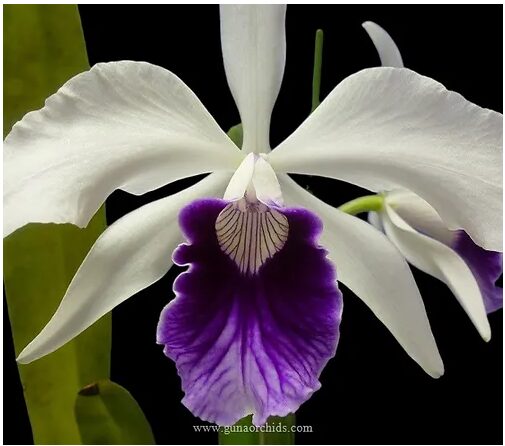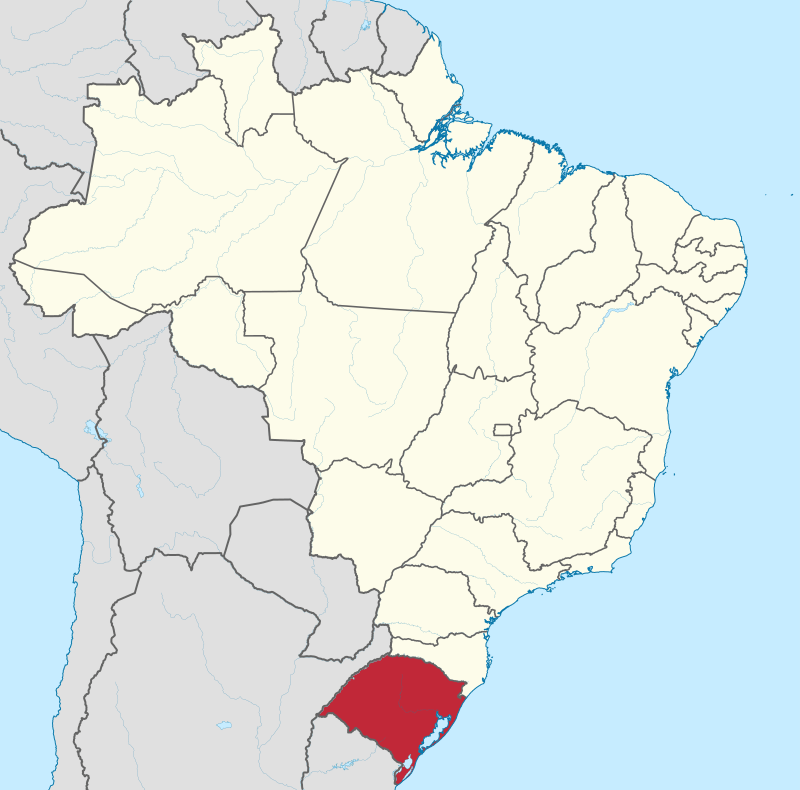One of our members, Sean Phelan, recently shared images of his specimen Laelia purpurata var werkhauseri on our WhatsApp group. When I asked if he could tell us more about this plant; he introduced us to a near bodice-ripping yarn of greed and covetousness from the far south of Brazil! I thought it was worth sharing; I’ve added some additional notes and edited a little to improve the original Portuguese to English translation.
In 1904, the first two specimens of Laelia purpurata var. werkhauseri were found by orchidist Karl Werkhauser in the state of Rio Grande do Sul, Brazil. It is characterised as different from the species type by its large and showy flowers and violet-plumb coloured lip although some refer to the colour a slate-purple/slate-blue. In any sense it differs from the type, which has a vibrant deep purple, with a cool and rather classy shade of blue.
Rio Grande do Sul lies at 30 degrees south of the equator, further south than the tropic of Capricorn; it is Brazil’s most southerly state and would be characterised as sub-tropical. It is therefore much cooler than the rest of this tropical country. For comparison, Morrocco lies 30 degrees north of the equator.
The first specimen of this uniquely coloured L. purpurata found was described as being “not that good at all”, but the second was so beautiful that Werkhouser named it ‘Superba’. Nobody had ever seen any purpurata with the violet-plumb colour this one displayed. A wonder!
Werkhauser kept the plants hidden from all but himself, his close family and friends. Guarded so jealously, collectors and orchid lovers only knew about this find by hearsay.
Werkhauser only enjoyed his treasures for one decade as he died in 1914; his son inherited the lesser of the two specimens, the other, the ‘Superba’, went to his daughter.
‘Superba’ was of course the one everybody wanted a division of; but the Werkhausers continued to keep the plants to themselves under lock by seven keys.
The daughter’s plant took on a mystical status, people who coveted it would say “Did you see the Witch’s jewel yet?” in a not so pleasant reference to her and the flower she guarded as scrupulously as her farther.
It was not until 1954 that Frau Werkhauser agreed to receive a group of orchid collectors to discuss selling a division of ‘Superba’.
The group travelled from São Paulo to Rio Grande do Sul where she lived at that time. It is reported that the negotiations started at midday, and they had the terms agreed by midnight.
Five pseudobulbs were exchanged for a large sum of money and silence on the details of the transaction and especially the sum involved! One detail of the transaction did leak; she refused the cheque proffered and instead demanded cash there and then (it was midnight).
Fortunately, one of the negotiators was president of a bank in Rio Grande do Sul. At 1am he got staff to open the bank and cash the check and returned to Frau Werkhauser’s residence. After carefully counting the pile of money, she said “Now, you can take the plant”. A few minutes later a telegram flew from Rio Grande to São Paulo saying: “The Witch’s jewel is with us!”
It’s not clear from this telling if what was sold was a division with five pseudobulbs or five pseudobulbs from the original plant or that the original plant was only five pseudobulbs in size (this seems highly unlikely).
There is a slight variation of the story, where the two plants are held by Werkhauser’s widow and not his children (see story by Carlos Keller here: https://www.orchidnews.com.br/on44-2021/clones/clones44_eng.htm), my edited text of his piece follows:
Many also call this variety werkhauseri, as they all descend from 3 unique purpurates with this colour so far found, one of them being the first, a plant found by orchidist Karl Werkhäuser near Osório (RS) in 1904. Later, Karl himself found at Praia do Torto, a place close to where the first one was found, another Laelia purpurata of the same colour, with a slightly darker lip, but with a better frame and larger size. This second one he gave the clonal name of ‘Superba’. The first was known only as “First” and sometimes “Superba” is called “Second”. After Karl Werkhäuser’s death in 1914, these two legendary cardinals of as-yet-unnamed colour were locked up by their widow in total cloister, out of sight for nearly 50 years. Because of this, one of them came to be called “A Joia da Bruxa” (The Witch’s Jewel), a fact already widely known in the orchidist world.
Later a third slate coloured purpurata was found in the same region by Walter Dreher and it differed from the previous two in that its’ habit was shorter and stockier and its flower, although smaller, had the best frame of the three.
This third and last Laelia purpurata slate already found in nature (others were found, but lost), was given the clonal name of ‘Sublime’, and is also called ‘Borba’, but I still haven’t found the reason for this second name. When, after half a century, Karl Werkhäuser’s widow, Dona Elvira, agreed to sell a division of her purpurata to a consortium of orchidists, the doors opened for the multiplication and diffusion of this beautiful variety.
It is believed that the widow actually sold only one division of the ‘Superba’, not knowing for sure which path followed the ‘First’. The first successful cross made with purpurata of this variety was number 1330 (‘Superba’ x ‘Sublime’) from Florália (RJ), made by Rolf Altenburg.
From then onwards, numerous crosses between the product of this seedbed were made and today this variety can be considered common and accessible to everyone. Those in good shape, however, are still rare and disputed and more recently striata have started to appear, with beautiful slate streaks on the petals.
I think what is wonderful about this story is its’ insight into how one species can have so much variation that some of its rarer forms become coveted specimens which exchange for large sums of money. There is always interest in orchids.
With thanks to Sean Phelan for his photos and lead on this story.
David Morse, Dublin, 2024



Thank you David for flushing out the ‘bones’ of my initial WhatsApp Group posting and putting this together for all. P.S. The ‘Witches Jewel’ I still in full flower but will fade over the coming days. Until next year of course ! Kind regards. Sean.
Thank you Sean, and it’s clearly well worth waiting for another year.